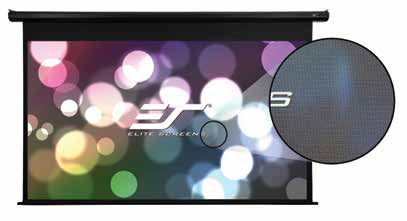How It’s Done: Projection in Rooms with High Ambient Light

Let there be light—just not too much of it. That’s a common challenge when displays and projectors have to go into lobbies, atriums and other spaces with a lot of sun and other ambient light.
Part of the challenge is due to construction hierarchy. With new facilities and major remodels, staff AV pros, as well as third-party integrators, typically are brought into planning discussions later than they’d like. By then, major decisions have been made that create AV challenges.
For example, executive conference rooms often have one or more walls of windows with impressive views. That means lots of sunlight to wash out videoconferencing displays. Ditto for lobbies whose extensive windows leave few places for digital signage.
One solution is to play the money card. When a major project gets the green light, educate the people who gave it. They might agree that giving AV a seat at the table with the architect and contractors from day one will avoid expensive fixes later on, such as five figures’ worth of motorized shades so a boardroom’s videoconferencing displays are viewable. Those savings also could free up more budget for AV.
The money card can include employee productivity. For example, when brightness has to be cranked up to compensate for ambient light, it takes a toll on viewers’ eyes, causing fatigue.
In some cases, it’s impossible to get displays out of bright light. Some options:
- The brighter the display, the greater its ability to produce images that hold up. Keep that in mind when choosing products because using a single set of specs as requirements throughout a facility can mean some displays are ill-equipped for high ambient light installations. The right specs for each location also avoids overspending in places where light isn’t a problem.
- Study user reviews to find products that have a reputation for resisting washout, even in direct sun, such as Christie MicroTiles.
- Consider matte finishes, which reduce reflections and glare.
- After installation, adjust the gamma correction to compensate for bright light.
- If light levels change significantly throughout the day, such as because of the sun’s position, look for displays with ambient light sensors to automatically compensate. Some displays have those sensors on both their front and back.
- If projection is the best choice for a space, consider a rear-projection system, which holds up better in high ambient light.
- See if there’s any flexibility in the room or with the choice of nearby materials. For example, could the floor or adjacent walls have less reflective finishes? Every bit helps. Elite Screens ChromaFlux is a spray-on or brush on screen material that turns any surface into a screen. It offers high gain (3D = 4.0, 5D = 3.0), and high polarization retention (98%).
- Don’t try to save money by using consumer-grade TVs. Pro displays typically have more features for tweaking to compensate for high ambient light.
- Finally, don’t overlook how direct sunlight can do more than just wash out images. For example, some screens will delaminate if the sun routinely heats them. The expense of replacing them prematurely is one more way to make the case with architects and general contractors for making AV more than an afterthought.
A daily selection of features, industry news, and analysis for tech managers. Sign up below.
The AVNetwork staff are storytellers focused on the professional audiovisual and technology industry. Their mission is to keep readers up-to-date on the latest AV/IT industry and product news, emerging trends, and inspiring installations.
